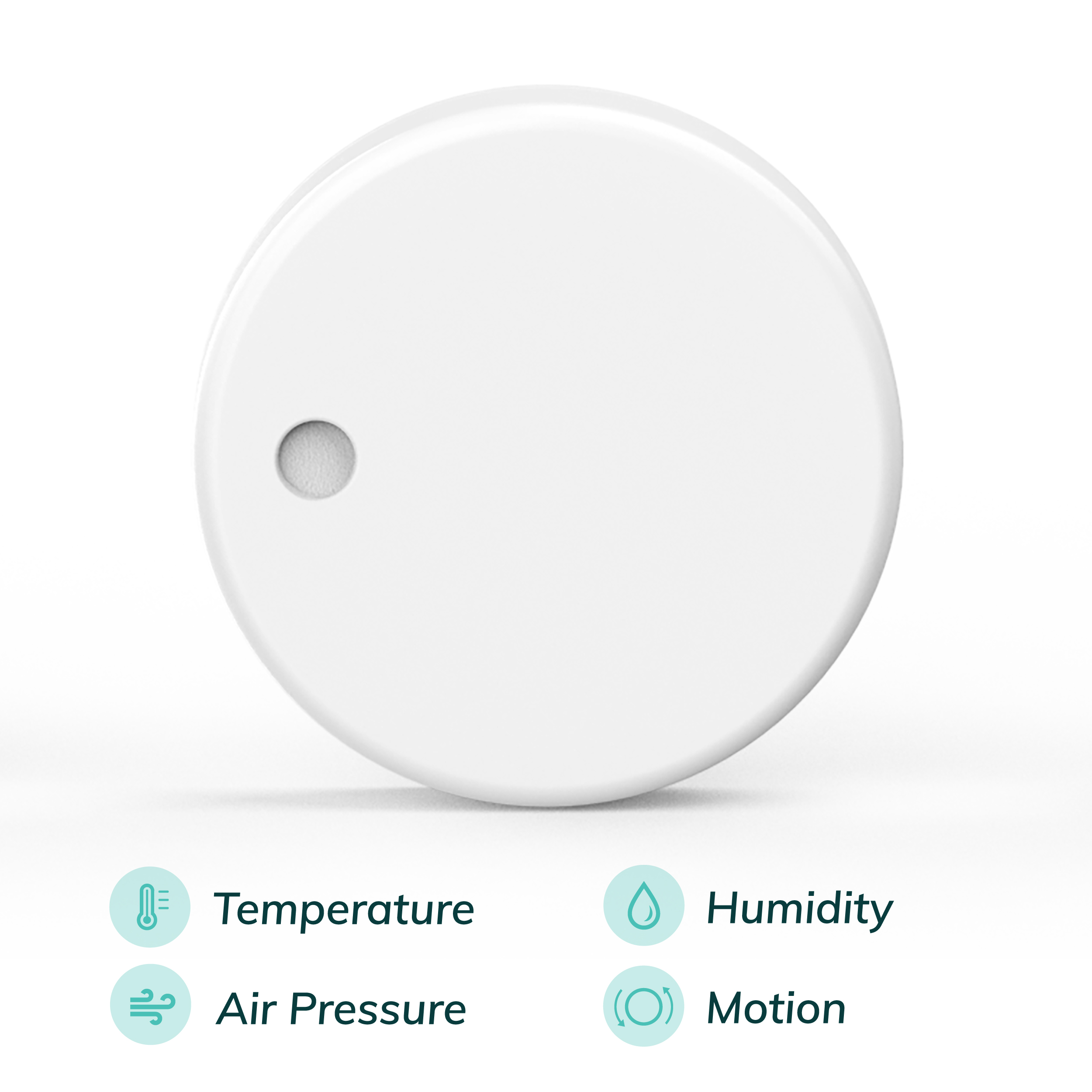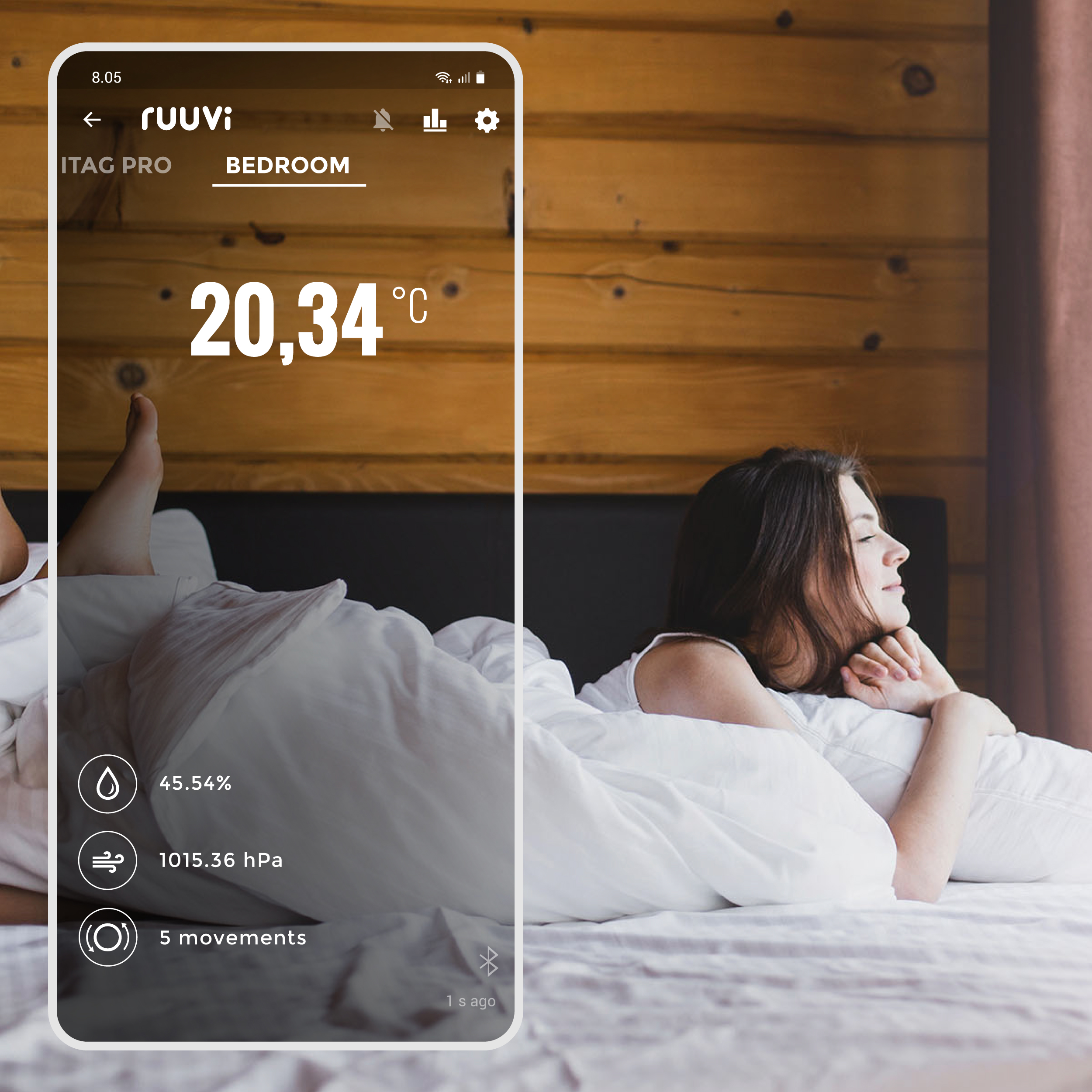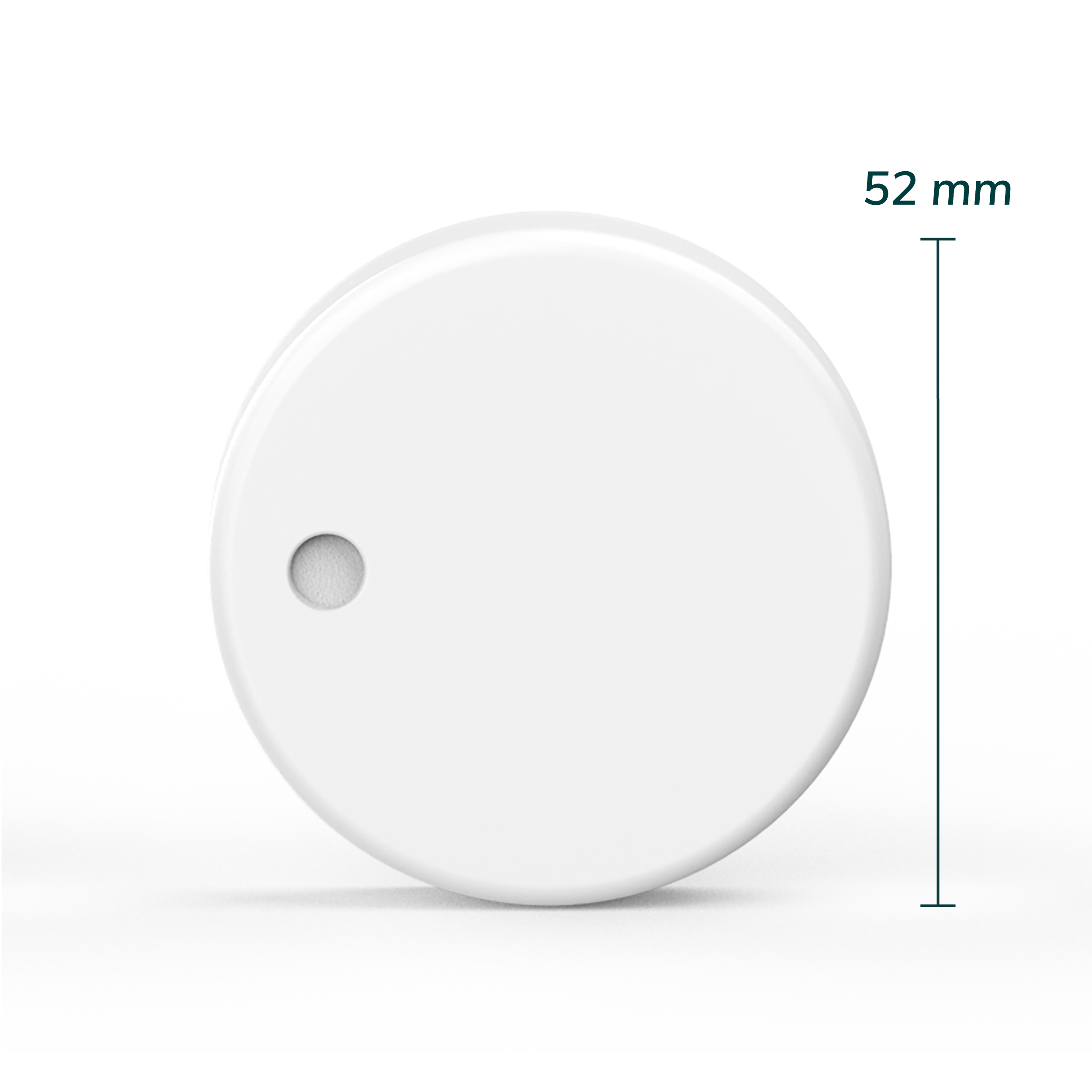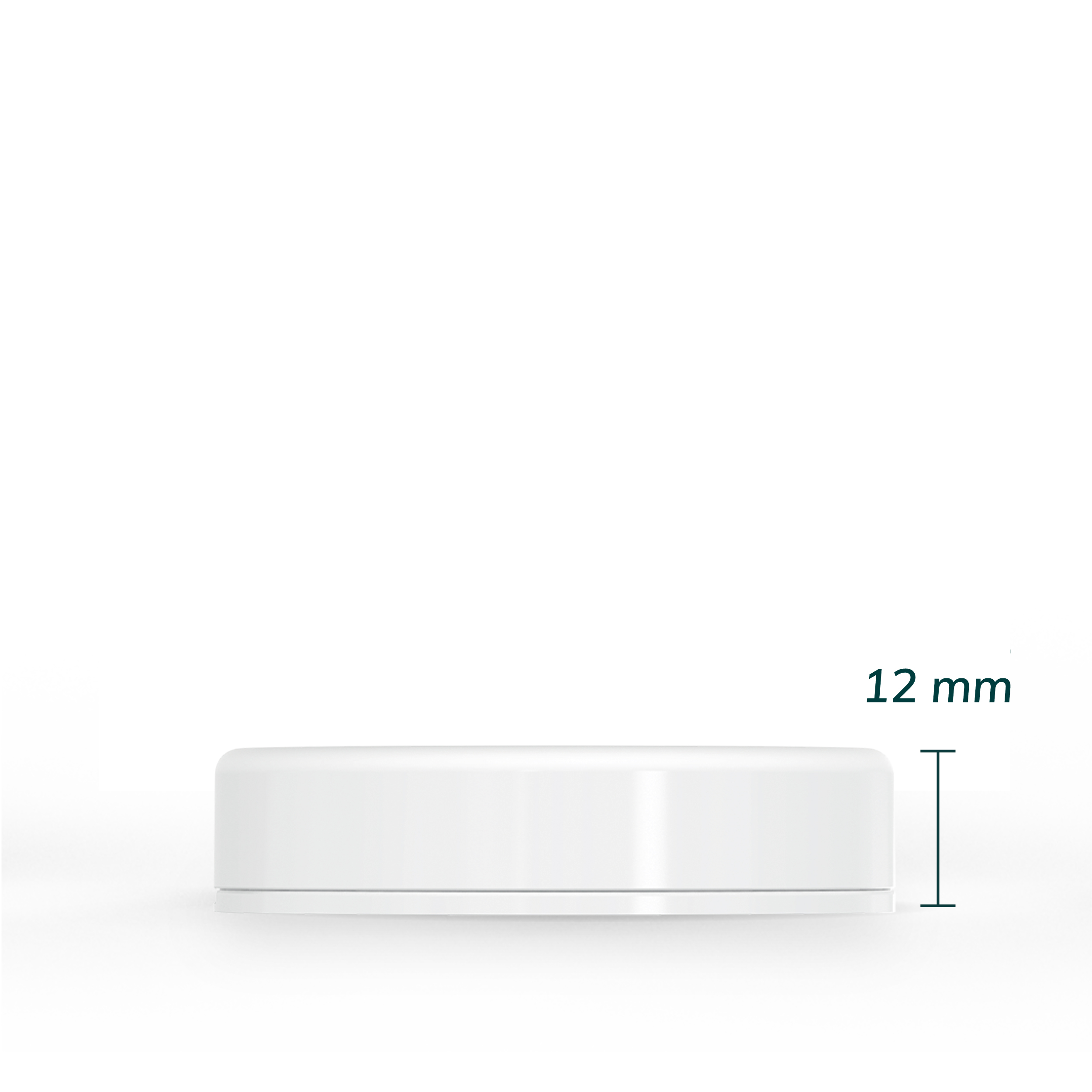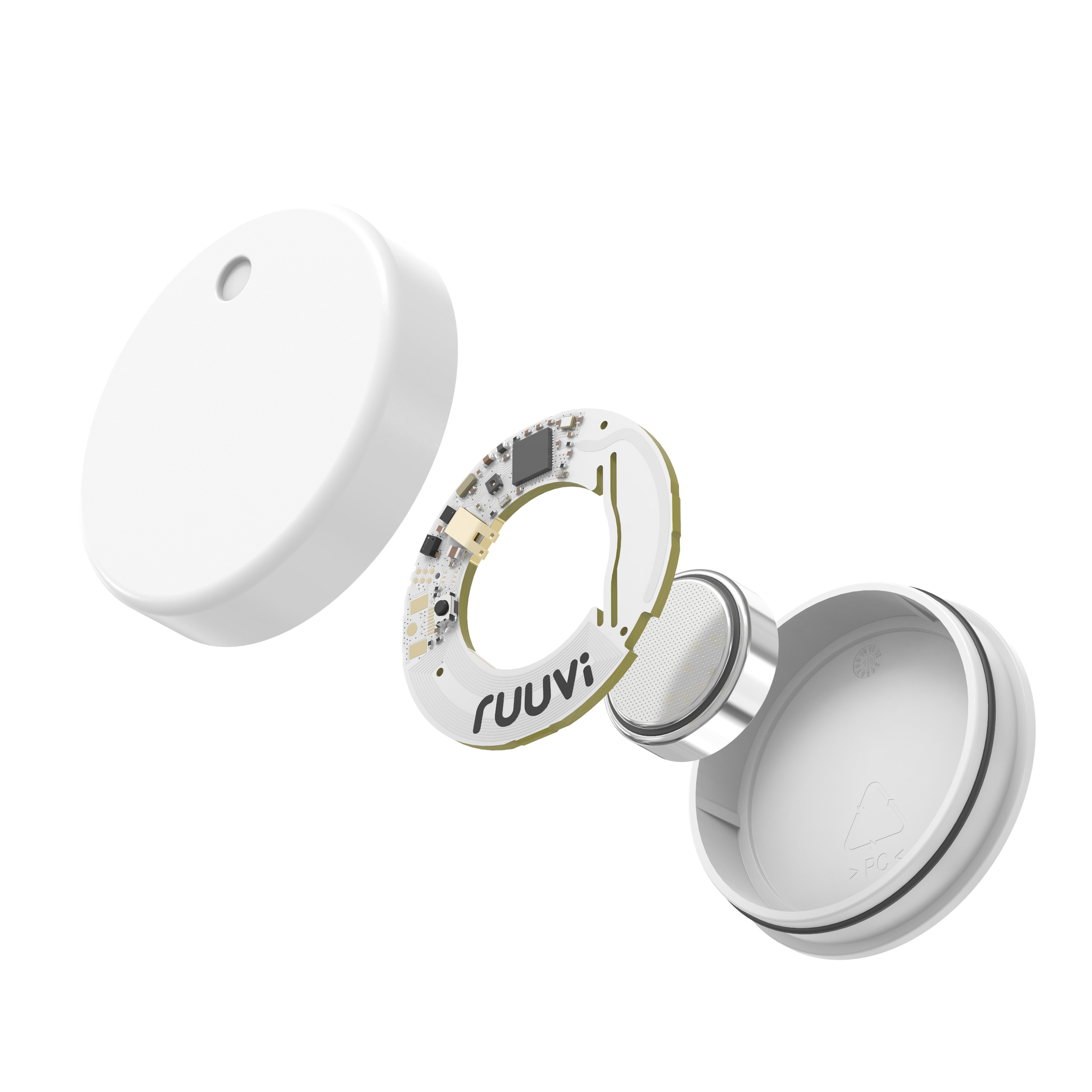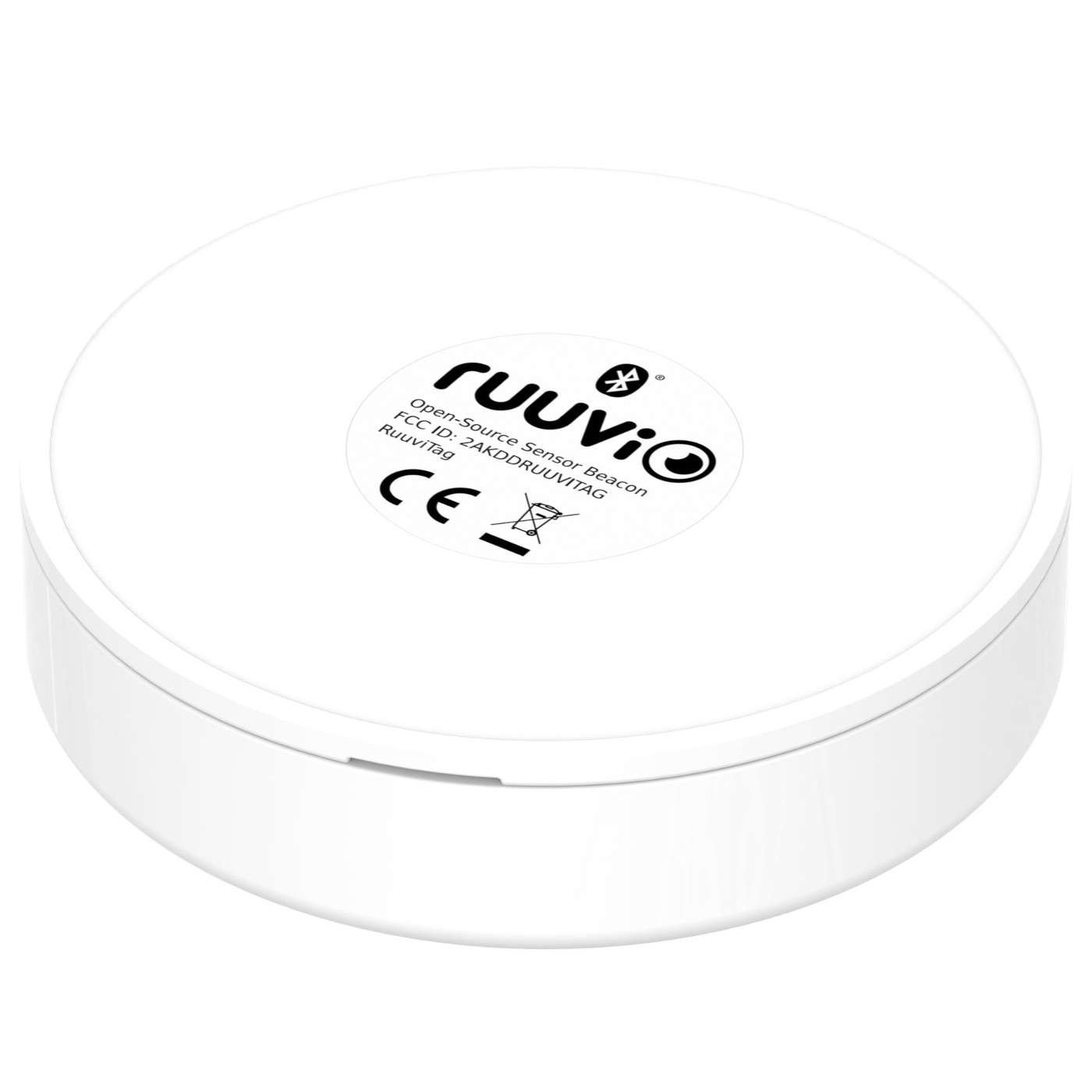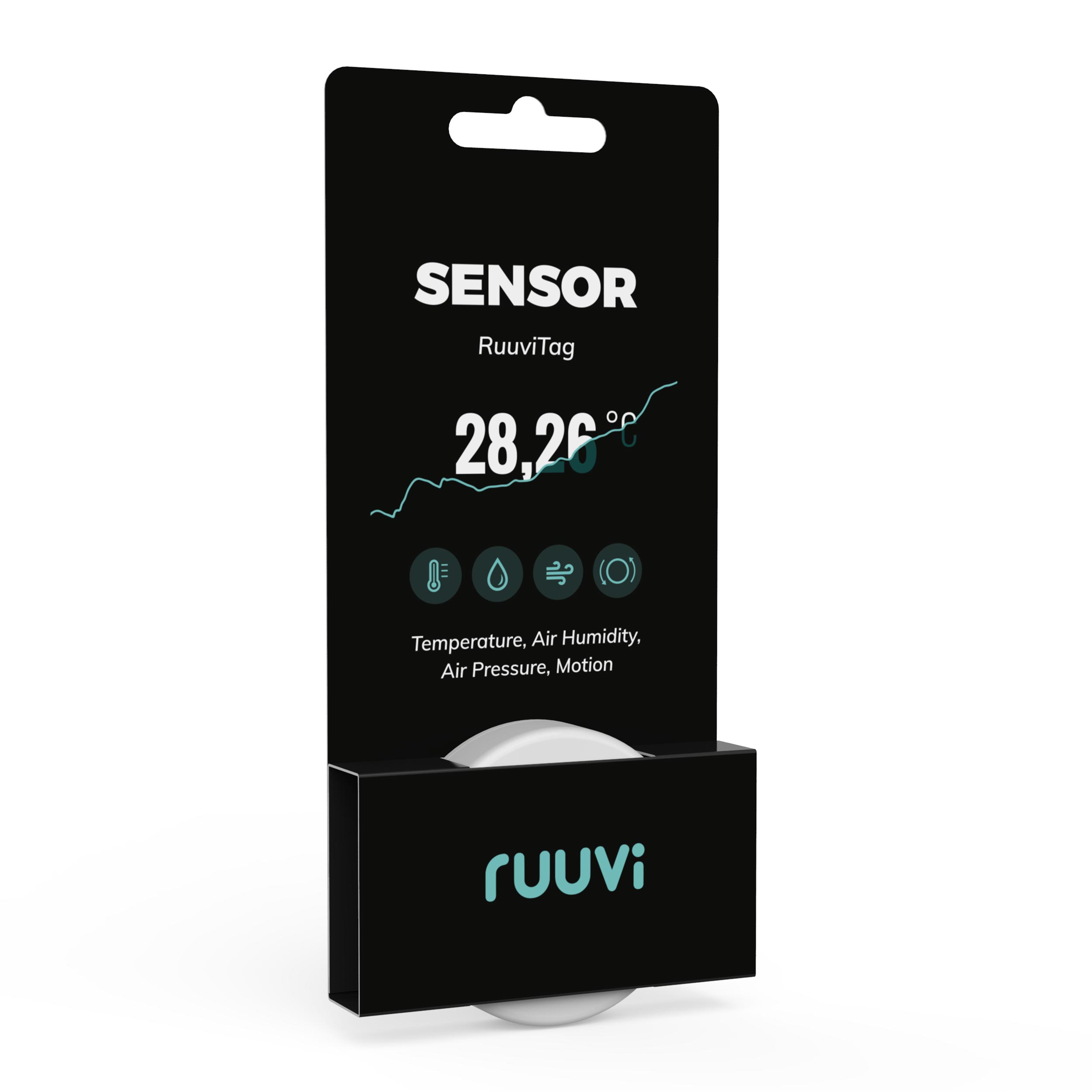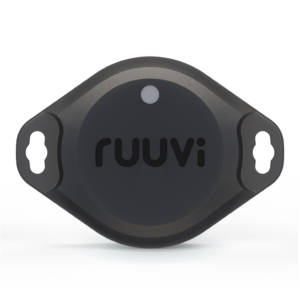Having a RV is a blast. The endless possibilities for visiting different locations for an overnight stay. The comfort in the small yet cosy cabin is something that everyone should experience. As convenient and fun as it is, there are also some concerns that will keep you guessing all the time, if the environment inside the van is just right. Is the fridge cold enough, what about the humidity, is mould building up in the mattresses…? The best type of a smart device in a caravan is a Bluetooth sensor, which monitors the ambient environmental factors at all times!
In this article, I will walk you through the steps that you can take to start monitoring your RV’s environmental conditions. Stick around and learn the benefits of environmental monitoring with Ruuvi’s Bluetooth sensors!
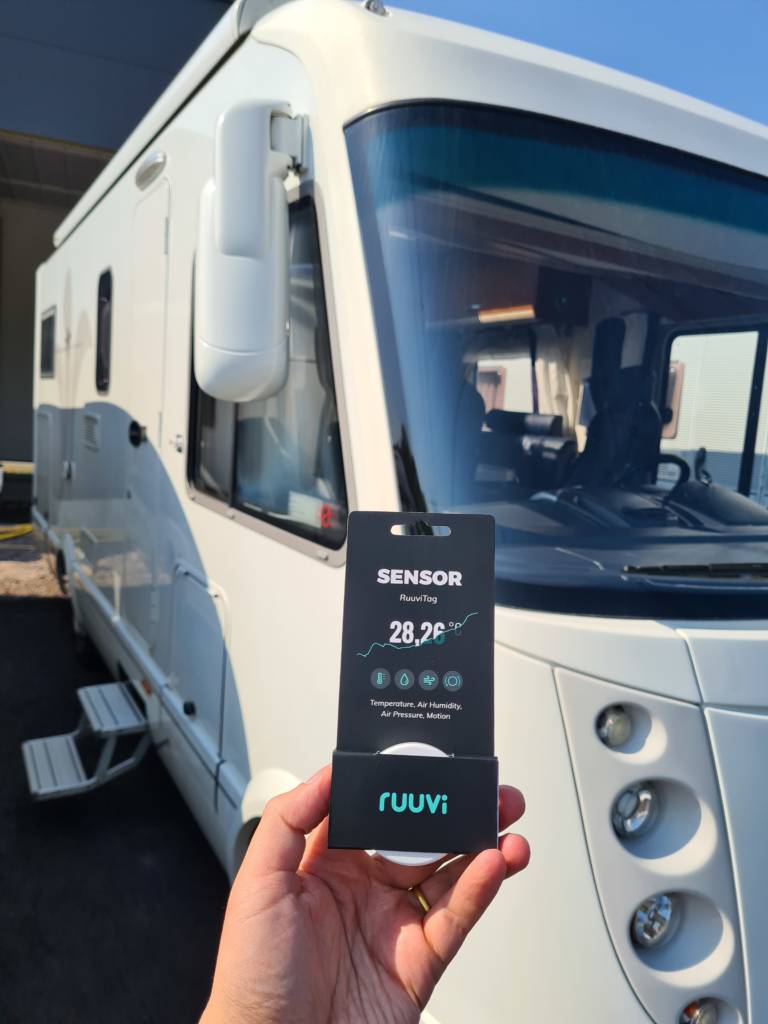
Why should I monitor my caravan’s temperature?
There are multiple reasons why you should use temperature sensors in a caravan. Most common use cases are:
- RV fridge and freezer temperature monitoring
- RV cabin temperature monitoring
- Pets’ environment temperature monitoring
- Battery temperature monitoring
- Cold storing during winter
Temperature is a major reason for food spoilage and batteries losing their energy charge. Also, keeping things comfortable requires the right temperatures. And as energy is currently expensive, it is not economical to use excess energy for heating.
Temperature problems in a caravan fridge
For longer trips, you will fill up the fridge with fresh food. And, if the fridge is dysfunctional or is in too warm a temperature, the food will spoil rather quickly. Also, running out of food is not on anyone’s vacation checklist.
Caravan’s fridges are problematic, because the sun can heat up the van. It is important to park your van so that the side of the fridge does not face directly towards the sun. If that is not possible, a temperature monitoring sensor is a must to ensure the fridge stays cold enough.
Temperature in a fridge should be around 2 °C – 6 °C or 35 °F – 43 °F.
RV fridges are usually inconsistent. Furthermore, temperatures between the door of the fridge and the back of the fridge can vary a lot. With a smart thermometer, you can find the best spots for different foods. Meat, fish and dairy products are the most vulnerable to higher temperatures.
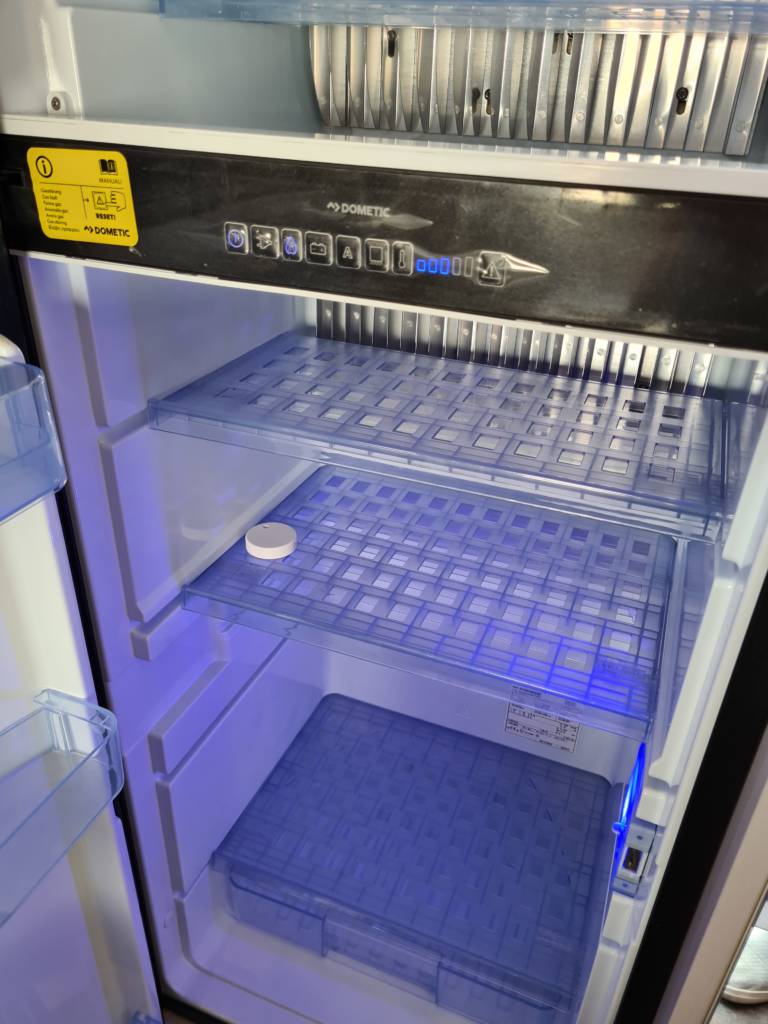
Freezer temperature monitoring with Ruuvi
Thanks to Ruuvi’s tough build, the sensors can withstand the freezing environments of freezers. Monitoring freezer temperature is as important as the fridge’s.
Monitor the temperature in an RV for comfortable living
Every person has their own level of tolerance for ambient temperatures. You can optimise your wellbeing and the energy consumption of a camper van. With a smart sensor, you will see the temperature variations of different spaces with easy-to-read graphs. Discover places where the insulation is not working properly. Or, maybe places where the temperature is too warm.
Take care of your RV’s batteries
Batteries must be kept in the right conditions in order for them to work properly. According to the Battery University, here are the temperature ranges for different types of batteries:
| BATTERY TYPE | CHARGE TEMPERATURE | DISCHARGE TEMPERATURE |
| Lead acid | –20 °C to 50 °C(–4 °F to 122 °F) | –20 °C to 50 °C(–4 °F to 122 °F) |
| NiCd, NiMH | 0 °C to 45 °C(32 °F to 113 °F) | –20 °C to 65 °C(–4 °F to 149 °F) |
| Li-ion | 0 °C to 45 °C(32 °F to 113 °F) | –20 °C to 60 °C(–4 °F to 140 °F) |
As you can see, the common lithium battery should not be charged at freezing temperatures. In colder climates, you should really pay attention to batteries’ ambient temperature in order to keep them working for longer.
Avoid mould growth in a RV
Camper vans are subjected to extreme weather conditions. Rain, direct sunlight and snow are all different types of elements making things harder for camper van owners. Tiny cracks in the walls, fridge leakage or poor ventilation may cause humidity build-up in a van. And, with high humidity comes mould.
A camper van’s humidity should be monitored at all times. Especially before longer trips conducting a humidity check is advisable. You would not want to drive for thousands of kilometres just to find out that mould has grown in your van, and is now making you sick.
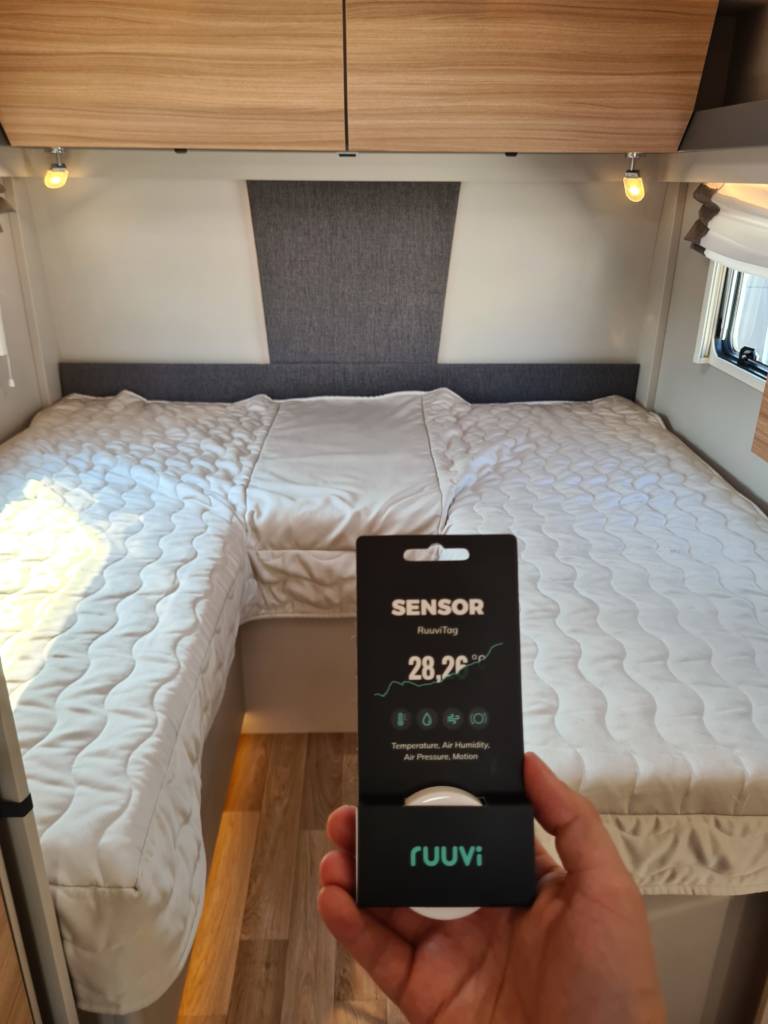
Mattresses are a common place where mould grows. Keeping air humidity within proper limits is the key to preventing mould from building up.
Why is mould harmful in a camper van?
Mould produces allergens and irritants that may cause allergic reactions in humans, and even respiratory problems. If you are in a mouldy camper van, your nose can start to run, eyes become itchy and you can feel tired. If a camper van is not ventilated properly, the mouldy air will remain in the van and the amount of allergens will increase, making you feel even worse over time.
Removing mould from a camper van can be expensive and problematic. Be smart and prevent moist conditions to stop this from happening.
Ruuvi is the best smart device for a caravan
Ruuvi is a Finnish company designing and producing innovative smart sensors for everyone. Our smart sensor RuuviTag is a small device that measures temperature, air humidity, barometric pressure and movement at all times. These measurements are sent to Ruuvi’s application – the Ruuvi Station – constantly via Bluetooth. In the app you can examine real-time measurement data, create adjustable alerts and view graphs.
Ruuvi Gateway sends this data to the Ruuvi Cloud service where you can access it at all times.
Here is a video in which you can see the basic function of the Ruuvi Gateway.
How to install Ruuvi’s devices in a camper van
Ruuvi’s products are created to be very easy to use, straight out of the box.
- You can activate the RuuviTag sensor by pulling out the plastic band inside the sensor. Now the sensor measures the environment and sends data.
- Then, you need to download the Ruuvi Station application and follow its on-screen instructions.
- Now, all you need to do is to place the RuuviTag in a desired location. For example, you could place one in the fridge, one in the cabin, one outside the van and one in the battery storing space.
That is all. Now you know the exact values of your camper van’s environment every time you are within Bluetooth range of RuuviTags. Don’t forget that with Ruuvi Gateway, this data is accessible at all times!
Ensure proper conditions during the camper van’s winter storage
With Ruuvi Gateway, you will be aware of your RV’s conditions at all times. RuuviTags do the measuring and the Ruuvi Gateway shares these measurements with you. Receive alerts if the conditions reach damaging levels and fix the issue before bigger problems occur.
If there is any water left in your RV’s pipes, freezing temperatures can break the pipes. On the other hand, if the temperature inside the camper van drops drastically, the dew point can be reached. Then, water will condensate on cold surfaces. If there is a significant amount of water inside the RV, real damage can occur during the winter months.
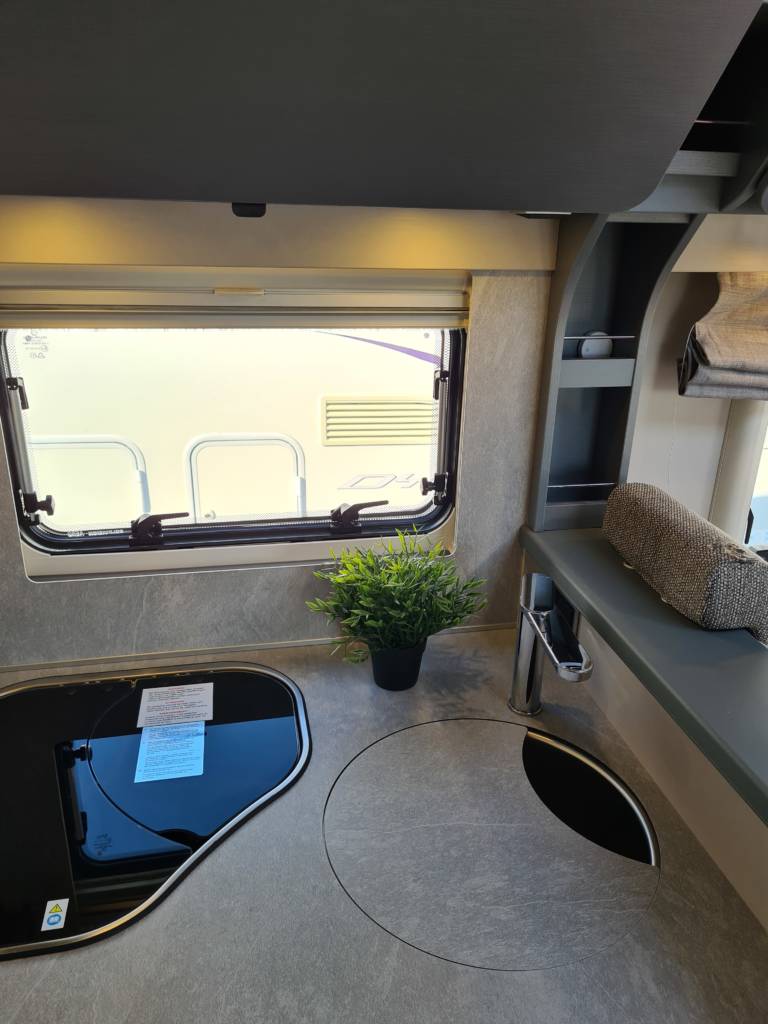
Ruuvi and Victron are working together for better van life
Victron and Ruuvi are integrated together. What does this mean?
You can read Ruuvi’s devices readings from the Victron remote monitoring system! You can even set certain automations to happen according to the measurements.
If the temperature exceeds optimal levels, the cooler can activate. If the humidity increases to unwanted levels, ventilation begins. Easy automation can be a solution for everyone!
Here is an informative video explaining the benefits of the integration:
Conclusions
Smart devices are here to stay. With Ruuvi’s devices rugged capsules, you do not need to worry about them breaking down. Now, you can stop worrying about suboptimal conditions in your RV. Ruuvi gets you covered.
Accurate measurements, easy-to-use application, long battery life, small size…We can’t think of anything else you would need from an environmental sensor. Take a look at our products, get inspired by their use cases and start to measure your world with us!
Buy RuuviTag to Your RV
It will help you ensure your camper van’s longevity easily, and you will be able to stop worrying about temperature and humidity causing havoc in your RV!
39,90€
Ruuvi is based in Finland. If you’re an EU consumer, VAT is included. If you’re a non-EU customer, you don't pay VAT. If you're an EU business, insert your VAT ID at checkout.
In stock
RuuviTag Sensor (4in1)
| Quantity | Unit Price(€) |
|---|---|
| 1 | 39,90 |
| 2 | 35,90 |
| 3-5 | 33,90 |
| 6-8 | 32,90 |
| 9-12 | 31,90 |
| 13-25 | 30,90 |
| 26-99 | 30,50 |
Are you looking for bigger quantities? Contact us for pricing.
FAQ
How do you monitor RV temperature?
RV temperature monitoring is made easy with smart and inexpensive sensors. Ruuvi is a great option for accurate yet accessible measuring. In addition to measuring temperature, Ruuvi’s sensors measure air humidity, air pressure and movement.
Why do you need a humidity sensor in a camper van?
In suboptimal humidity conditions, mould will start to grow. Mould is harmful to your health and it is very difficult to eradicate from a van.
What temperature is good for the battery?
For lithium batteries, 0 °C to 45 °C (32 °F to 113 °F) is a correct charging temperature. In these conditions, the battery will keep its charge better than in other temperatures.
